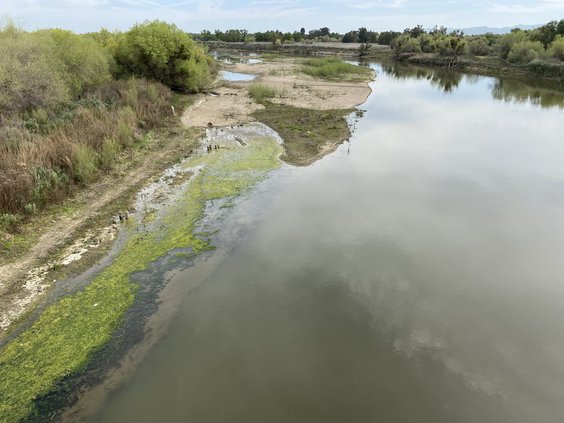New Melones water is being sacrificed to meet Delta outflow requirements in a bid to conserve water behind Shasta Dam and Folsom Dam.
The move — not allowed in the operating agreement that South San Joaquin Irrigation District and Oakdale Irrigation District entered into with the Bureau of Reclamation— has both districts concerned.
New Melones has never been tapped to address Delta flows. That has been a function of both Shasta and Folsom reservoirs. All three dams are part of the Central Valley Project that the Bureau operates.
SSJID General Manager Peter Rietkerk noted that the Bureau is trying to “think out of the box” in order to weather a severe drought situation. However, the possibility New Melones could become a replacement for water releases from Shasta and Folsom to address Delta water needs in future dry years or even normal or above years has both districts concerned.
That’s because it could lead to more water being made available for those that depend on water from Shasta and Folsom including 2.5 million people in various cities that are allocated 600,000 acre feet in addition to farms and water that goes to wildlife refuges and help keep rivers flowing year round by permanently raiding the Stanislaus River basin.
Shifting the Delta flow requirement onto the Stanislaus River watershed beyond this year could have major ramifications on water availability for the two districts as well as the cities of Manteca, Lathrop, and Tracy.
Rietkerk pointed out 2021 hydrology is shaping up as the fourth or fifth driest year in the 120-year history of measurements and record keeping on the Stanislaus River Basin.
That means based on the current Delta strategy the Bureau is deploying it could have serious ramifications for the farms and cities the two districts serve if 2022 ends up also being a dry year.
Stanislaus River flows from New Melones managed by the Bureau serve multiple purposes concurrently. The purposes include water supply for riparian water right holders, fishery management objectives, dissolved oxygen for fish, and assure basic water quality at Vernalis south of Manteca where the Stanislaus River flows into the San Joaquin River.
OID and SSJID have rights to the first 600,000 acre feet of water that flows into New Melones each year. That is based on a 1988 agreement that acknowledges the district’s historic water rights. Melones Reservoir the two districts built in 1925 was inundated in order to build New Melones with its 2.4 million acre feet of capacity.
As of Thursday New Melones was at 54 percent of capacity and at 84 percent of average for June 17.
That compares to Shasta with a maximum capacity of 4.5 million acre feet that is now at 41 percent capacity and 49 percent of average for June 17.
Folsom can hold 977,000 acre feet. It is currently at 33 percent capacity and 40 percent of average for June 17.
New Melones on Thursday was releasing 3,111 cubic feet per second (CFS) against inflows of 409 CFS.
The Bureau, instead of tapering down releases due to the drought has kicked them above what would be normal for operating procedures in a dry year.
To contact Dennis Wyatt, email dwyatt@mantecabulletin.com





